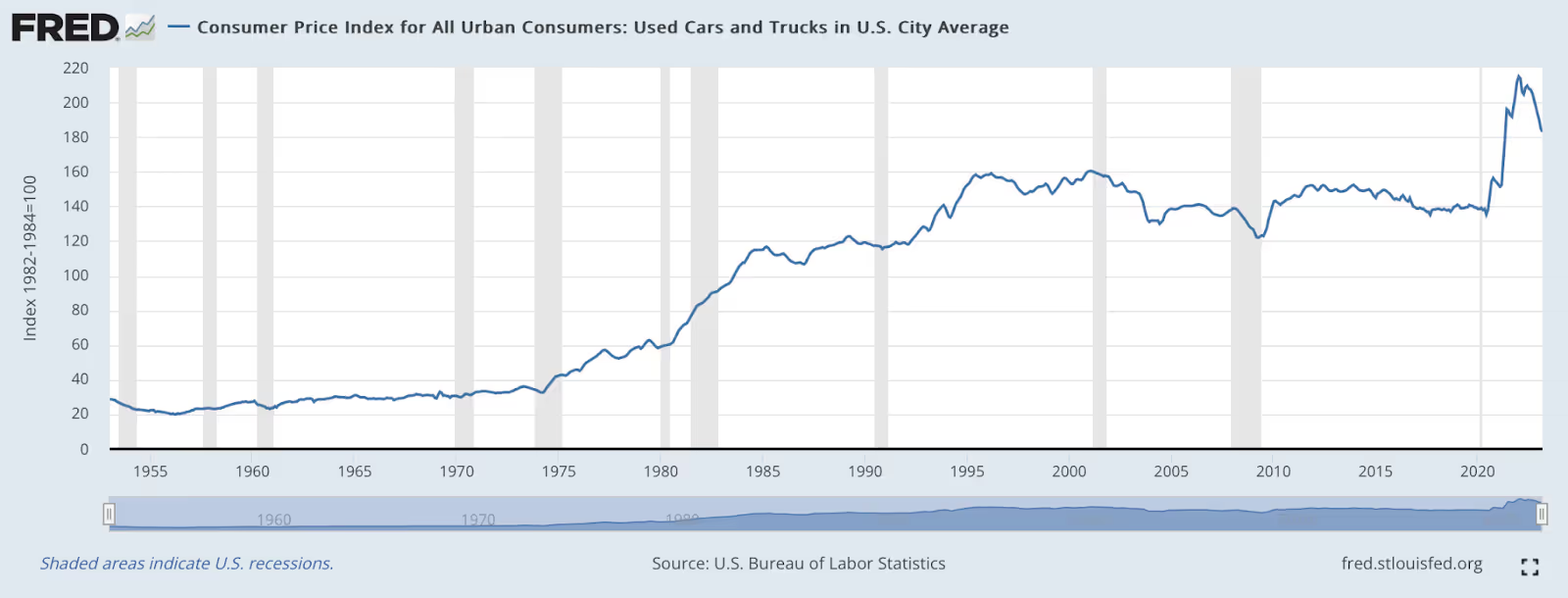Used Vehicle Market Mayhem

If you’ve been thinking about buying a used car, quickly get yourself into the market. Like yesterday. Even still, you might be too late.
All signs point to a looming increase in the price of used cars in the very near future. Good for the seller, bad for the buyer. Both inflation and lack of supply of cars are 2 of the culprits of this price increase, and both were caused by the pandemic. Used car prices remain anywhere from 35%-50% above their pre-pandemic price, even though there have been downtrends in prices since 2020.
The lack of supply of cars in the market comes from the simultaneous uptick of price for new cars, averaging nearly $48,000 and out of reach for the average American. With less people buying cars, that means less trade-ins, and less used cars on the market. The computer chip shortage also did not help. Computer chips are needed for newer models of vehicles, and without those, less new cars were available, which also shot up their price.
Americans want used cars because they are still cheaper than new cars, but it’s clear that the market is unexpectable. With lack of options and a high chance of overpaying, having a car at all could turn into something of a luxury. The average used car price is $33,582 in 2023. In 2020-21, it was around $24,000. The graph below shows the extreme increase in prices from before the pandemic.

Take a look at the staunch increase of used cars’ consumer price index (CPI). Consumer Price Index is the average change in price in a product. To see exact data points for each year on the original graph, click here.

Zero car households, especially zero car households in poverty, will be greatly impacted by the worsening used car market. In the United States, 8.7% of the population does not have access to a working car. That means, 29,116,190 people without a car. While this might seem like a great advancement for worsening climate change, or indication that public transportation in America is increasing in popularity, it’s not as good as it looks. Unfortunately, the amount of people that do not have access to a car are not doing so by choice. Studies show that the majority of no-car households are those in urban areas with lower socioeconomic status, and it is a huge barrier to employment.
If personal transportation is a barrier, what is the solution? There could be several.
- Investment in America’s public transportation system. Many people do not have access to public transportation that gets them from their front door to their destination. Many people must bike or drive to their initial bus stop, and the bike or rideshare from their public transit drop-off point to their destination. Investing in programs that provide first-mile last-mile transportation can help close this gap. An example of this is the ConnectWorks Program in Cleveland that utilizes public transit and a mobility-as-a-service company called SHARE Mobility. Click here to read more about this.
- Commuter Benefits. Employers can offer transportation to and from work, or compensation for parking and public transportation, as a way to support employees who do not own a vehicle.







